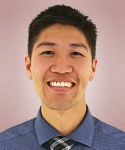August 28th, 2015
How Do You Teach Art?
Andrew Ip, MD

Andrew Ip, MD, is a 2015-16 Chief Resident in Internal Medicine at Emory University in Atlanta, Georgia.
When I first applied for medical school, I beamed about exploring not just the science of medicine, but also the art. But what is that art? Some would say it’s clinical experience, combined with being cultured and compassionate and communicating with clarity/conviction. But how would one teach that art?
Journal Watch’s Dr. Allan Brett recently reviewed a multicenter US study following ~300 metastatic cancer patients who had failed initial chemotherapy (NEJM JW Gen Med Aug 6 2015). The study showed that additional chemotherapy for patients with poor life expectancy <6 months had no better quality of life or prolonged survival. In fact, patients who had the highest performance status had worse quality of life when given additional chemotherapy.
Even with our remarkable scientific discovers in medicine, we still have a very tough job to deliver the science of medicine in a patient-centered format. Oftentimes, it is a judgment call to decide if a patient with end-stage liver disease or heart failure or COPD or cancer would benefit from any additional aggressive treatment. From my experience, many patients, and their families, are initially resistant to accept a terminal prognosis and want to pursue aggressive measures. What happens next involves a moment in which the physician can analyze the situation, with risks/benefits in mind from a scientific point of view, and then deliver a message that keeps the patient’s goals of care in mind while also informing the patient that you do not wish to harm them with interventions that may be not in their interest. This is one of the toughest things to do as a clinician, often leading to many of us tip-toeing a fine line.
One story that has stuck with me from residency is the story of Mr. G, an Ethiopian patient. Mr. G had end-stage cardiomyopathy and had been in the hospital for 3 months while on inotropes. Unfortunately, he did not qualify for any advanced heart failure therapies. As our team was trying to explain the dire situation, he initially wanted all aggressive measures. He also said to me, “please, don’t tell my wife and children.” He squeezed my hand as he spoke to me, and I squeezed back.
As a clinician who prides myself on my empathy and compassion, this was one instance where I had to go against honoring all of my patient’s wishes. Our team felt aggressive measures would not give any quality of life and would likely lead to more harm than good. We also contacted his wife and children to inform them their loved one was going to die soon. This was the most difficult part, as Mr. G was extremely upset from a cultural and personal standpoint that his family knew his prognosis. It was a judgment call that, because I misunderstood the cultural implications, fractured my physician-patient relationship with Mr. G at the time. However, I did not give up on delivery of care, and I treated Mr. G and his family as my own family — and a remarkable turnaround occurred in our relationship. His children delivered a card and flowers to me, thanking me for all the personal care I gave to their father, and Mr. G embraced me as his physician, holding my hand yet again. Mr. G died peacefully 2 days later, with his family at his bedside.
Maybe the art of medicine is not something you teach. Maybe it is an individual style you develop with experience with direct patient care or with role models and mentors. But what we often forget is the patient should be at the center of anything we deliver in medicine. That may be the art.
I would love to hear thoughts from others about their experience developing their own art of medicine, or in scenarios where sometimes treating a patient may have caused more harm than good.



This might related to the issue of sympathy v empathy!!!!
Thanks for the insight Dr. Ip. In my own experience, I entered medicine to practice the “art” much more than the “science”. However, as I’ve moved on in my training it has often become easier (due to the time constraints and pressures of our job) to approach patients first with the “science”. In my experience art in all forms requires a certain ability to reflect, understand and express. I find, as you’ve pointed out, the art of medicine starts with the patient relationship and empathy. Once I can relate with the patient I find that practicing the art of medicine comes much more naturally. It’s imperative that we as clinicians never lose sight of the whole patient rather than focus purely on the disease process. In my opinion the art of medicine is best learned by observing role models practice their art. In fact, senior clinicians, like parents, should realize that their actions are silently embraced and emulated by those learning under them.